
|
Astronomy Picture Of the Day (APOD)
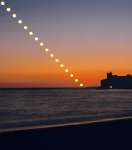 A Solstice Sunset Self Portrait
A Solstice Sunset Self Portrait
21.06.2013
Today, the solstice is at 05:04 Universal Time, the Sun reaching the northernmost declination in its yearly journey through planet Earth's sky. A June solstice marks the astronomical beginning of summer in the northern hemisphere and winter in the south.
 Edge on NGC 3628
Edge on NGC 3628
20.06.2013
Sharp telescopic views of magnificent edge-on spiral galaxy NGC 3628 show a puffy galactic disk divided by dark dust lanes. Of course, this deep galactic portrait puts some astronomers in mind of its popular moniker, The Hamburger Galaxy.
 Milky Way Over Crater Lake with Airglow
Milky Way Over Crater Lake with Airglow
19.06.2013
How many different astronomical phenomena have come together to create the above vista? Several. First, in the foreground, is Crater Lake -- a caldera created by volcanism on planet Earth about 7,700 years ago. Next, inside the lake, is water.
 A Supercell Thunderstorm Over Texas
A Supercell Thunderstorm Over Texas
18.06.2013
Is that a cloud or an alien spaceship? It's an unusual and sometimes dangerous type of thunderstorm cloud called a supercell. Supercells may spawn damaging tornados, hail, downbursts of air, or drenching rain. Or they may just look impressive.
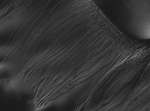 Dry Ice Sled Streaks on Mars
Dry Ice Sled Streaks on Mars
17.06.2013
What creates these long and nearly straight grooves on Mars? Dubbed linear gullies, they appear on the sides of some sandy slopes during Martian spring, have nearly constant width, extend for as long as two kilometers, and have raised banks along their sides.
 APOD Turns Eighteen
APOD Turns Eighteen
16.06.2013
The first APOD appeared eighteen years ago today, on 1995 June 16. Although garnering only 14 pageviews on that day, we are proud to estimate that APOD has now served over one billion space-related images over the past eighteen years.
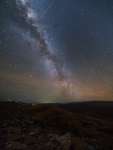 Delphinid Meteor Mystery
Delphinid Meteor Mystery
15.06.2013
Over a five hour period last Tuesday morning, exposures captured this tantalizing view of meteor streaks and the Milky Way in dark skies above Las Campanas Observatory in Chile. During that time, astronomers...
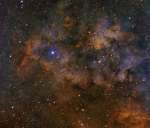 Sharpless 115
Sharpless 115
14.06.2013
Sharpless 115 stands just north and west of Deneb, the alpha star of Cygnus the Swan in planet Earth's skies. Noted in the 1959 catalog by astronomer Stewart Sharpless (as Sh2-115) the faint...
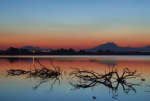 Four Planet Sunset
Four Planet Sunset
13.06.2013
You can see four planets in this serene sunset image, created from a series of stacked digital exposures captured near dusk on May 25. The composite picture follows the trail of three of them...
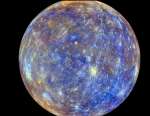 All of Mercury
All of Mercury
12.06.2013
For the first time, the entire surface of planet Mercury has been mapped. Detailed observations of the innermost planet's surprising crust have been ongoing since the robotic MESSENGER spacecraft first passed Mercury in 2008 and began orbiting in 2011.
|
January February March April May June July August September October November December |
|||||||||||||||||||||||||||||||||||||||||||||||||